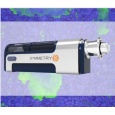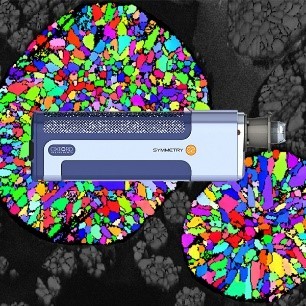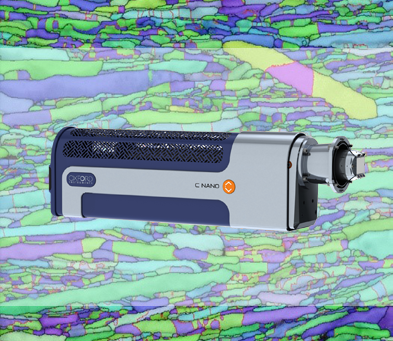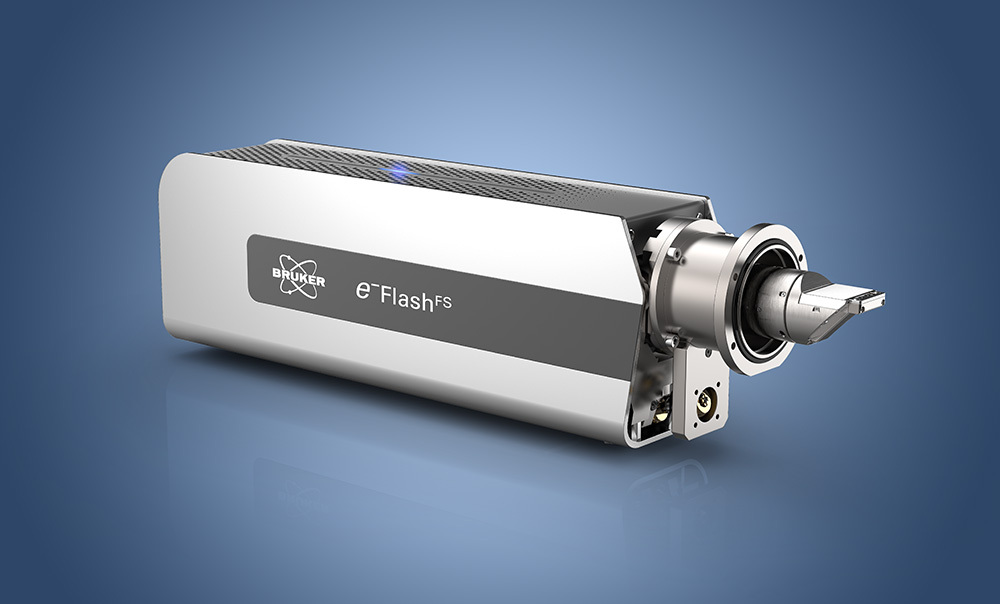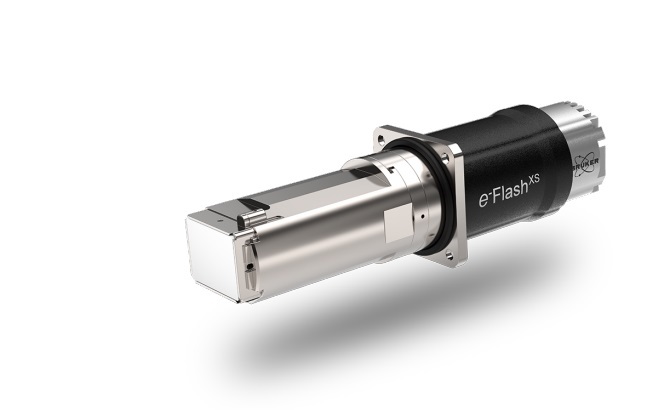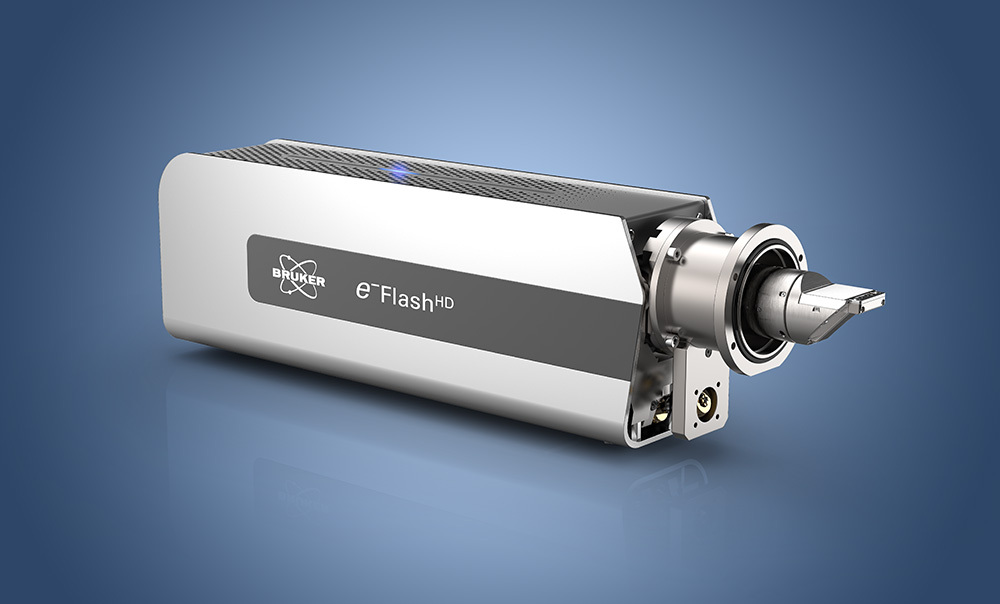方案详情
文
Introduction
Geological samples can be extremely challenging to analyse using EBSD, not only are they non-conductive, but many
rocks contain a large number of phases, typically with low symmetry and often producing relatively weak diffraction
patterns. The challenge is twofold: firstly the EBSD detector needs to be sensitive enough to acquire good, high
resolution EBSPs in a short time period, and secondly the software needs to be able to distinguish reliably between all the
minerals present in the sample.
In this application we demonstrate the power of the Symmetry® CMOS-based detector coupled with the AZtec® software
for the successful analysis of a multiphase, deformed eclogite sample. The extreme sensitivity of Symmetry enables high
quality diffraction patterns to be collected in just a few milliseconds, and the advanced indexing algorithms within AZtec,
as well as the full integration of EDS data, ensure reliable and accurate measurement of all phases.
方案详情

Application Brief Characterising Complex Rock Samplesusing Symmetry@ El Introduction Geological samples can be extremely challenging to analyse using EBSD, not only are they non-conductive, but manyrocks contain a large number of phases, typically with low symmetry and often producing relatively weak diffractionpatterns. The challenge is twofold: firstly the EBSD detector needs to be sensitive enough to acquire good, highresolution EBSPs in a short time period, and secondly the software needs to be able to distinguish reliably between all theminerals present in the sample. In this application we demonstrate the power of the Symmetry@ CMOS-based detector coupled with the AZtec@ softwarefor the successful analysis of a multiphase, deformed eclogite sample. The extreme sensitivity of Symmetry enables highquality diffraction patterns to be collected in just a few milliseconds, and the advanced indexing algorithms within AZtec,as well as the full integration of EDS data, ensure reliable and accurate measurement of all phases. Sample and Experimental Details The sample is a high pressure rock sample, an eclogite,collected from the South Island of New Zealand. Themineralogy of the sample is relatively complex, with at least10 phases present including garnet, omphacite, K-feldspar,plagioclase feldspar and quartz. Additional accessory phasesinclude rutile, ilmenite, hornblende, apatite and kyanite. Thesephases represent a wide range of crystallographic symmetries,covering 6 of the 7 possible crystal systems. The sample was polished down to a final stage using 50 nmcolloidal silica suspension, and then coated with ~5 nm carbonprior to analysis to prevent charging. A field emission gunSEM was used for the EBSD analysis, using a 15nA currentat 20kV accelerating voltage, scanning a 1000 x 1000 pixelgrid on the sample surface with a measurement step size of1.5 um. EBSD patterns were collected using the Symmetrydetector at a 312x256 pixel resolution and with an exposuretime of 4ms. Simultaneous X-ray measurements werecollected using an X-Max@ 80 EDS detector, and data wereacquired using AZtec for all 10 phases. X-ray results aidedthe discrimination between the 2 feldspar phases, using theTruPhase option within AZtec. The hit rate was 96% at aspeed of 247 indexed patterns per second, and minor datacleaning was performed to remove isolated non-indexed andmisindexed pixels. The full data collection took 1 hour and 7minutes. Fig. 1: Phase map, superimposed on a pattern quality map. Characterising Complex Rock Samplesusing Symmetry E Fig. 2. Mixed element X-ray map. Fig. 3a. Orientation map (all Euler colouring scheme), superimposed ona pattern quality map. Red lines mark twin boundaries in the plagioclaseand quartz. Thick red line marks a misorientation profile shown right. 500pm Map showing the deformation within omphacite grains using the Grain RelativeOrientation Distribution map component, superimposed on a pattern quality map. Conclusion Symmetry, with its balance of speed and sensitivity, is the ideal detector for analysing complex geological samples. In thisexample, an area of an eclogite sample has been effectively analysed in just over 1 hour, with excellent measurement of all10 phases, as well as simultaneous characterisation of the chemistry via EDS. These results allow researchers to understand inunprecedented detail the metamorphic and structural evolution of the suite of rocks from which this sample was collected. Acknowledgements Dr. Sandra Piazolo is thanked for providing the eclogite sample. www.oxford-instruments.com/Symmetry The materials presented here are summary in nature, subject to change, and intended for general information only. Performances are configuration dependent. Additional details are available. Oxford Instruments NanoAnalysisis certified to ISO9001, ISO14001 and OHSAS 18001. Symmetry, AZtec and Tru-l are Registered Trademarks of Oxford Instruments plc,all other trademarks acknowledged. @ Oxford Instruments plc, 2017. All rights reserved. Document reference:OINA/AB/EBSD Symmetry/Eclogite/0517. The Business of Science" IntroductionGeological samples can be extremely challenging to analyse using EBSD, not only are they non-conductive, but manyrocks contain a large number of phases, typically with low symmetry and often producing relatively weak diffractionpatterns. The challenge is twofold: firstly the EBSD detector needs to be sensitive enough to acquire good, highresolution EBSPs in a short time period, and secondly the software needs to be able to distinguish reliably between all theminerals present in the sample.In this application we demonstrate the power of the Symmetry® CMOS-based detector coupled with the AZtec® softwarefor the successful analysis of a multiphase, deformed eclogite sample. The extreme sensitivity of Symmetry enables highquality diffraction patterns to be collected in just a few milliseconds, and the advanced indexing algorithms within AZtec,as well as the full integration of EDS data, ensure reliable and accurate measurement of all phases.
确定


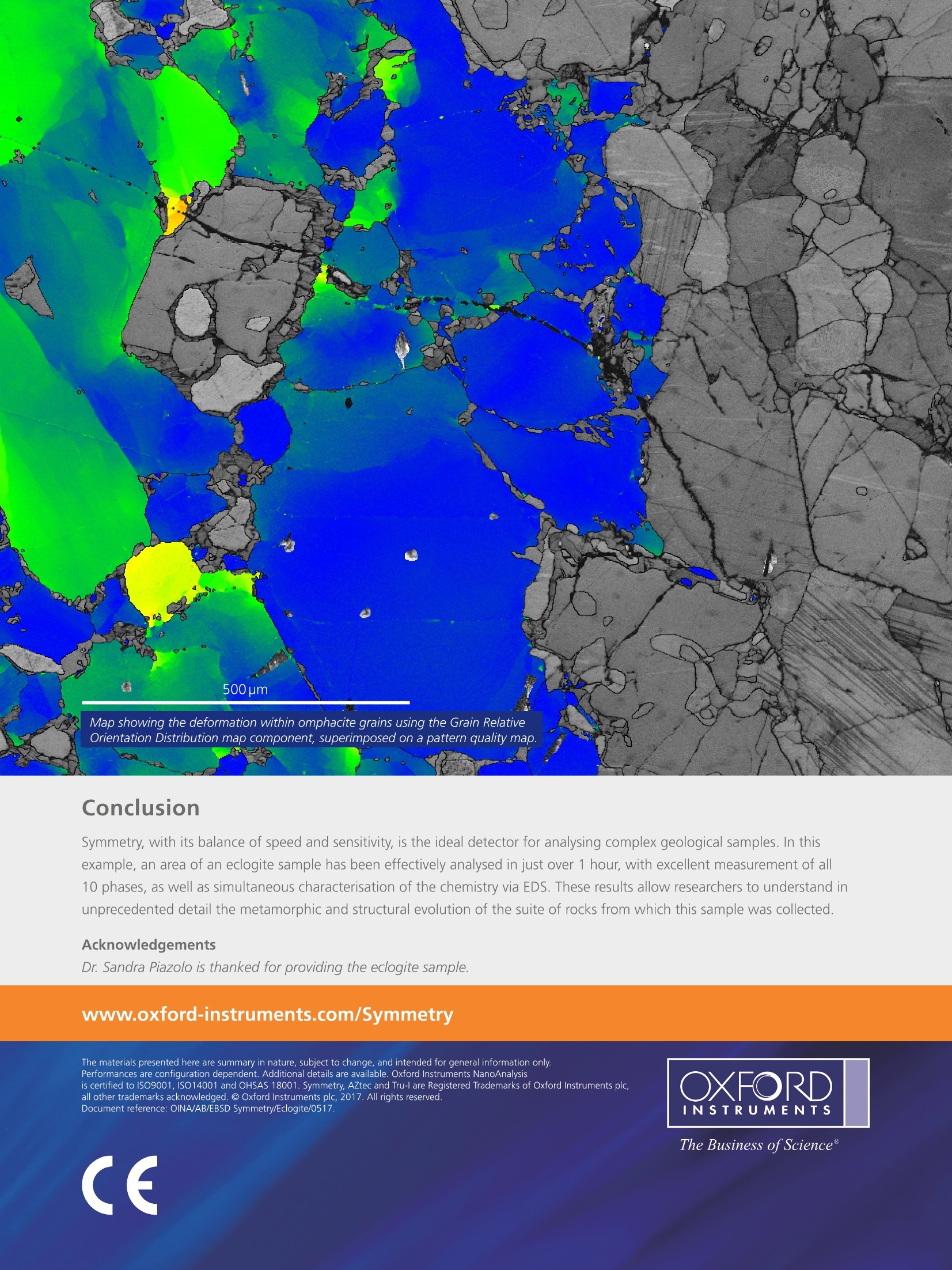
还剩1页未读,是否继续阅读?
牛津仪器科技(上海)有限公司为您提供《岩石中元素分析检测方案(EBSD系统)》,该方案主要用于非金属矿产中元素分析检测,参考标准--,《岩石中元素分析检测方案(EBSD系统)》用到的仪器有EBSD探测器Symmetry S3 牛津仪器
推荐专场
相关方案
更多










